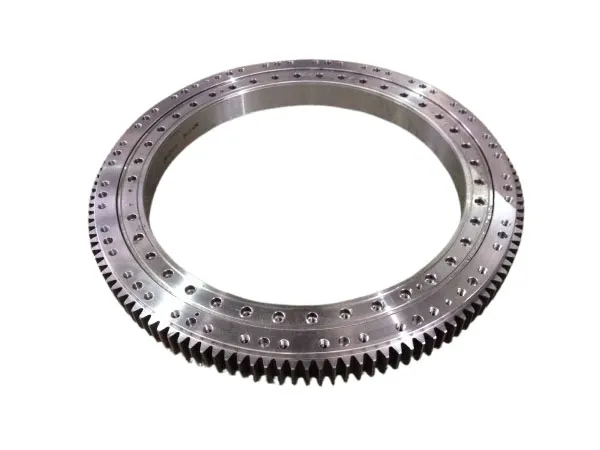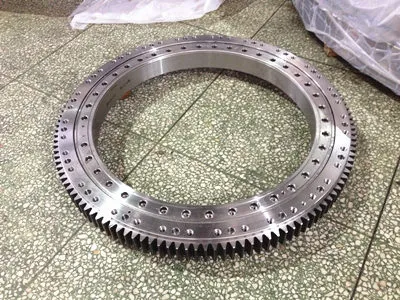Slewing bearings are critical components in heavy machinery such as cranes, excavators, wind turbines, and industrial turntables. Designed to support axial, radial, and tilting moment loads, they must operate reliably under extreme conditions. However, like any mechanical component, slewing bearings are subject to wear, stress, and environmental influences that can lead to premature failure.
Slewing bearing failure can be caused by a variety of factors, often occurring prematurely due to issues that arise before traditional fatigue limits are reached.
Causes of Slewing Bearing Failure

1. Lubrication Problems (Most Common Cause)
Inadequate Lubrication: This is the leading cause of premature bearing failure. Without sufficient lubrication (often a heavy-duty, extreme pressure grease for slewing bearings), metal-to-metal contact occurs, leading to increased friction, wear, overheating, and ultimately surface damage like roughening, waviness, fine cracks, and flaking (spalling).
Incorrect Lubricant: Using the wrong type of grease (e.g., non-EP2 grease) can lead to lubricant film breakdown under high loads, causing excessive heat and accelerated wear.
Contamination of Lubricant: Dirt, sand, water, or other debris in the lubrication system act as abrasives, scratching or indenting raceways, which then develop fine cracks and spalling. Pressurized water jets during cleaning can also force water past seals, leading to corrosion.
Over-lubrication/Too Much Lubricant: While less common than under-lubrication, too much grease can also cause problems like excessive heat build-up.
Expired or Deteriorated Grease: Over time, grease can lose its lubricating properties.
2. Improper Installation and Mounting
Surface Flatness/Out-of-Flat Mounting Structure: Slewing bearings require infinitely rigid and flat mounting surfaces. If the structure distorts significantly under load or is out-of-flat, it applies loads to localized areas rather than distributing them evenly. This causes permanent deformation in the local area, leading to early failure.
Misalignment: Improper alignment during installation can cause uneven loading and increased wear.
Improper Preloading: If the bearing isn’t preloaded correctly, it can lead to uneven loading and premature wear.
Bolt Torquing Errors: Incorrect tightening of mounting bolts can cause the bearing to bind or generate excessive heat. Loose bolts can lead to vibration, uneven stress, and even structural damage.
Foreign Objects During Installation: Debris introduced during installation can cause damage.

3. Overloading and Stress
Exceeding Bearing Capacity: Applying loads that exceed the bearing’s design capacity will cause permanent deformation and premature failure.
…
For more detailed information on the causes of slewing bearing failure, please click here:https://www.lynicebearings.com/a/blog/causes-of-slewing-bearing-failure.html


